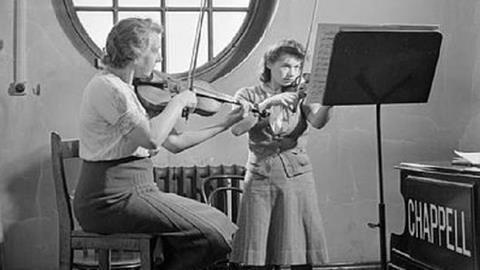If we work together and communicate effectively there is no reason why a student cannot benefit from lessons with more than one instrumental tutor, writes Celia Cobb

Many instrumental teachers believe there is only room in a student’s life for one tutor; as the saying goes, too many cooks spoil the broth. I’ve heard countless tales from colleagues about parents who have taken children for extra lessons with other teachers on the sly, resulting in confusion and unhappiness all round, and the widely accepted view is that working concurrently with two instructors is a bad thing. However, having had experience both of sending my students to other teachers and of working with other teachers’ pupils, I am not convinced that such an exclusive approach is always correct. It’s true that nobody, least of all the child, will benefit if emotions are running high and conflicting egos are at play. But if everyone is committed to working towards a common objective, the results can be hugely positive.
Earlier this year I was asked to work with a talented young violinist who was preparing to take ABRSM Grade 5. His (brilliant) teacher was preparing his pieces thoroughly and felt that an additional weekly lesson on scales and sightreading with another tutor would be more beneficial than trying to cram everything into his already jam-packed sessions with her. I had space in my schedule and was happy to work in partnership on this basis. The arrangement worked well for everybody. The hierarchy was obvious: the child’s regular teacher was the ‘main’ teacher, and my input was in the capacity of the ‘second’ teacher. My brief was clear and I was pleased to stick to it, so there was no direct overlap of content within lessons; however, regular communication with the main tutor meant that I was able to help reinforce specific technical points that arose in her lessons.
Similarly, many of my pupils have worked with other teachers over the years. If my students are making progress, I’m happy. I do know, however, that in order for them to have the ‘Aha!’ moments we’ve all been waiting for, they may sometimes need to hear someone else saying broadly the same things as me but in a different way. As the main teacher, I try to be open to other teachers’ strategies. We all have our idiosyncrasies – from the phrases, images and metaphors we use to explain matters, to the order in which we teach certain milestones. But there is usually more than one way of approaching things, and if a student comes back with a suggestion from another pedagogue that is different from your usual methods, it is worth giving it consideration, especially if it seems to be helping.
Given the large amounts of time, thought and effort we invest in our pupils, it is understandable if we sometimes fall into the trap of being territorial over them. The prospect of a student spending time with another teacher can be unsettling, especially as there is often a ‘wow’ factor in the first few lessons with someone new. Much as we think we have our students’ best interests at heart, it’s hard not to be affronted if a few words from a new teacher make a noticeable difference. We sometimes need reminding that an additional tutor should be viewed as a new member of a team with a collective goal to ensure that the student is making the best possible progress.
In order for a partnership of teachers to work, a few basic ground rules should be established. As a minimum, both teachers need to be happy with the arrangement. A hierarchy of teachers must be established from the outset, and there should be clear division of labour within the roles. It also helps if the teachers know each other and have compatible teaching styles. Above all, regular communication is key. We should never find ourselves in the unfortunate situation whereby a student is unable to play a passage because Teacher A has told them to shift but Teacher B has said they must extend. If we can be flexible and keep ourselves focused on the student’s progress, it is perfectly possible for teachers to work together in a positive and complementary way that can only be of benefit to everybody.
-
This article was published in the July 2020 Isaac Stern issue
Celebrating the great violinist’s chamber music collaborations in his centennial year – with contributions from Midori, Pinchas Zukerman and Cho-Liang Lin. Explore all the articles in this issue.
More from this issue…
- Celebrating Isaac Stern’s centenary
- Spotlight on Stradivari’s 1694 ‘Benecke’ violin
- Top soloists on writing cadenzas
- Reassessing Australian violinist Alma Moodie
- The vihuela de arco of medieval Spain
Read more playing content here
-












































No comments yet